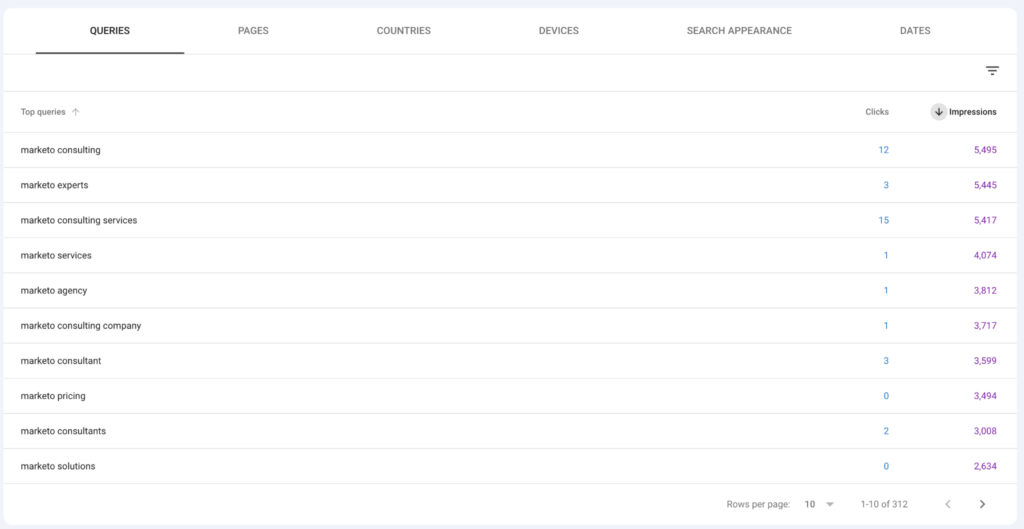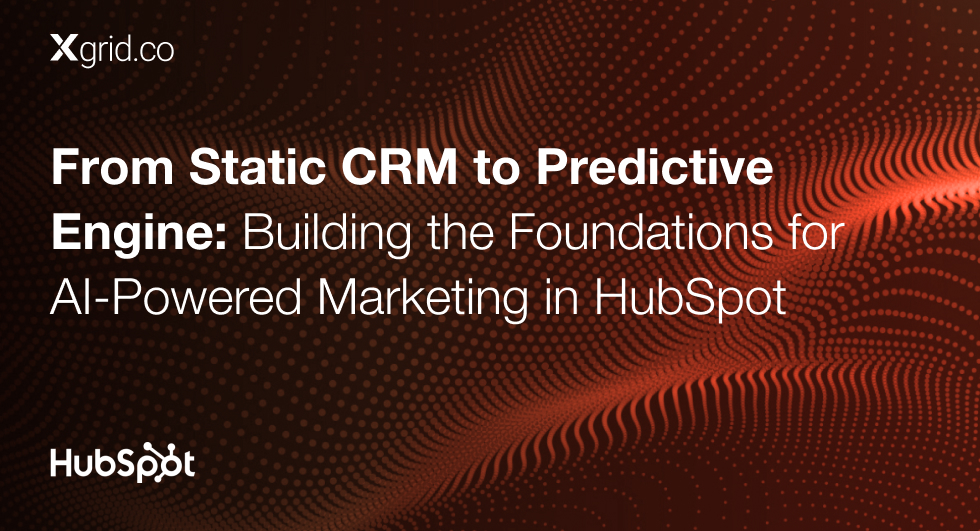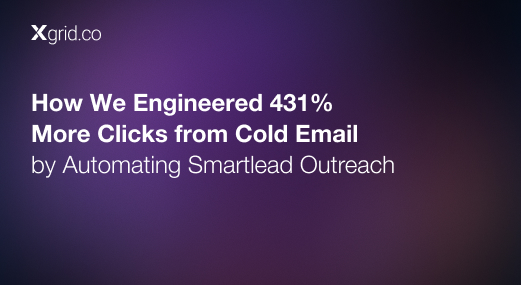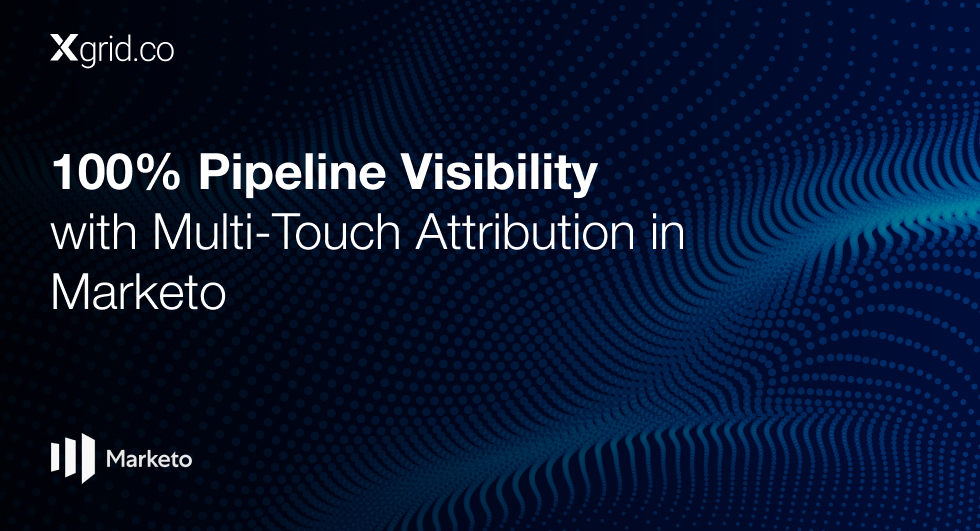How one Marketo report became 200+ articles, 70+ first‑page rankings, and top‑two positions for high‑value keywords
Goal
Transform proprietary Marketo research into a scalable, SEO-powered content engine to increase visibility, drive inbound pipeline, and establish thought leadership in the US B2B automation space.
The Problem: Why Expertise Alone Wasn’t Enough to Scale Organic Influence
Even for seasoned marketing operations teams, converting deep product expertise into repeatable, pipeline-driving content remains a key bottleneck. This challenge was also faced by the marketing team at Xgrid.
Xgrid had published a comprehensive Marketo research report based on input from 60+ practitioners.
While rich in data, the report lacked distribution velocity and SEO traction. GTM and RevOps leaders were not finding or engaging with the content organically—limiting its commercial impact.
At stake:
- A growing disconnect between technical Marketo insights and buyer search behavior
- Slow content velocity and lack of repeatable SEO workflows
- Inability to scale subject matter authority across enterprise Marketo use cases
Key Challenges: Manual Bottlenecks, Inconsistent Content, and Zero Search Visibility
- High-effort content creation
Creating expert-level, use-case-driven content at scale (200+ articles) using manual processes was impractical.
- No standard content structure
Articles varied in quality, depth, and tone—weakening thematic authority and SEO performance.
- SEO misalignment
Existing content didn’t align with commercial-intent keywords like “Marketo implementation partner” or “CRM-Marketo integration.”
- Lack of repeatable process
There was no defined pipeline for leveraging AI responsibly and consistently across content production.
Solution Strategy: Enterprise-Grade GTM Engineering Meets Scalable AI Content Ops
To solve these challenges, Xgrid engineered a modular, AI-powered GTM content pipeline that integrated:
1. Strategic Content Architecture
- Atomized a single report into 200+ modular articles grouped into intelligent SEO topic clusters.
- Mapped each cluster to high-impact enterprise use cases like lead scoring, data hygiene, CRM integration, and attribution modeling.
- Prioritized mid- and bottom-funnel topics to align with buyer intent and RevOps priorities.
2. Intent-Driven SEO Targeting
- Identified high-converting, commercial-intent keywords targeting US-based B2B automation leads.
- Built a full-funnel keyword strategy—from awareness (“Marketo vs. HubSpot”) to conversion (“Marketo consulting services”).
- Aligned each article to buyer journey stages, ensuring value across the evaluation cycle.
3. AI + Human Workflow Pipeline
- Used LLMs to generate structured first drafts at speed.
- Trained AI with standardized templates optimized for SEO, UX, and enterprise tone.
- All content reviewed and refined by Marketo-certified consultants—ensuring technical accuracy and relevance.
4. Optimization and Intelligence Loop
- Leveraged Google Search Console and SEMrush to track impressions, click-throughs, and keyword positioning.
- Continuously refined underperforming articles, improved linking between clusters, and adjusted metadata and titles based on search behavior.
Execution Roadmap: From Static Report to 200+ SEO Assets
Phase 1: Foundation and Framework Design
- Thoroughly reviewed the original Marketo report to extract high-value insights that remained relevant over time—focusing on topics like attribution modeling, lead scoring, integrations, and marketing operations.
- These insights were broken into modular themes that could stand alone as individual articles or be grouped into topical clusters.
- A comprehensive keyword strategy was developed to align each content piece with specific business goals and GTM objectives.
- High-intent keywords were mapped to stages of the buyer journey, from tool evaluation to advanced platform optimization.
Phase 2: AI-Driven Production
- Using AI-driven content generation tools, we produced over 200 articles at scale, guided by a standardized structure and keyword-driven briefs.
- This approach dramatically accelerated production while maintaining consistency in tone, structure, and search relevance. AI was used to handle the heavy lifting of drafting, freeing up human resources for higher-value refinement.
- Every AI-generated draft was reviewed by Marketo-certified subject matter experts to validate accuracy, correct platform-specific nuances, and ensure alignment with real-world use cases.
Phase 3: Growth and Optimization
- Monitored performance metrics like impressions, click-through rates (CTR), and average position using tools like Google Search Console and SEMrush. Weekly reviews helped identify content trends, shifts in user behavior, and priority areas for optimization.
- Pages that weren’t gaining traction were revisited and enhanced using updated keyword research and search trend data. We re-optimized headlines, metadata, and content sections to better align with user queries and search intent.
- Established a strategic internal linking structure that connected related articles within the same topical clusters. This not only improved crawlability and SEO authority distribution but also guided users to deeper, related content.
- As a result, engagement increased and cornerstone content gained more traction in SERPs.
Technology Stack: What Powered the Transformation
| Layer | Stack |
| AI & Content Ops | ChatGPT, Google Gemini, Custom SEO Brief Templates |
| Search Optimization | SEMrush, Google Search Console, SurferSEO |
| Analytics & Tracking | GSC, GA4, Looker Studio Dashboard, SemRush Keywords Position Tracker |
Results: Thought Leadership at Scale, Pipeline-Ready Content in Weeks
| Metric | Value |
| Articles Produced | 200+ |
| First-Page Google Rankings | 70+ |
| Total Organic Impressions | 450,000+ |
| Top 2 Rankings for Key Terms | 6 (e.g., “Marketo consulting services”) |
| Traffic Source | 80% from US-based enterprise buyers |
| Sales Impact | Direct increase in inbound inquiries |

Additional Benefits and Strategic Wins
- Scalable Foundation: The structured pipeline can now be reused for other MarTech tools and GTM verticals.
- Brand Trust: High-quality, technically accurate content improved perceived authority among enterprise buyers.
- Lead Alignment: SEO traffic now directly supports sales conversations—particularly for implementation and CRM integration services.
- Agile GTM Feedback Loop: Search performance now informs product positioning and new service development.
Conclusion: SEO as Infrastructure, Content as Code
By blending AI-assisted scale with human oversight, Xgrid operationalized thought leadership into a pipeline-ready asset. More than content creation, this was GTM engineering in action—designed to create, capture, and convert organic demand.
This initiative proved that SEO isn’t just a marketing tactic—it’s a foundational GTM layer that, when engineered correctly, accelerates sales, builds brand authority, and drives measurable ROI.
Golden Nuggets:
- AI wrote the first draft; our SMEs wrote the last. The winning formula? Machines for speed, humans for trust—especially in complex MarTech buying decisions.
- We didn’t just create content—we engineered a system where one research asset perpetually fuels demand. This is GTM efficiency: turning static insights into a scalable organic acquisition channel.
- We treated SEO like DevOps: iterative, data-driven, and infrastructure-led. The result? Organic search became a predictable pipeline engine, not a ‘marketing experiment.
- Impressions don’t pay bills—but 70+ first-page rankings for commercial intent terms do. Traffic is vanity; revenue-aligned SEO is sanity.
What’s your ‘static report’ that could be fueling the pipeline right now?





